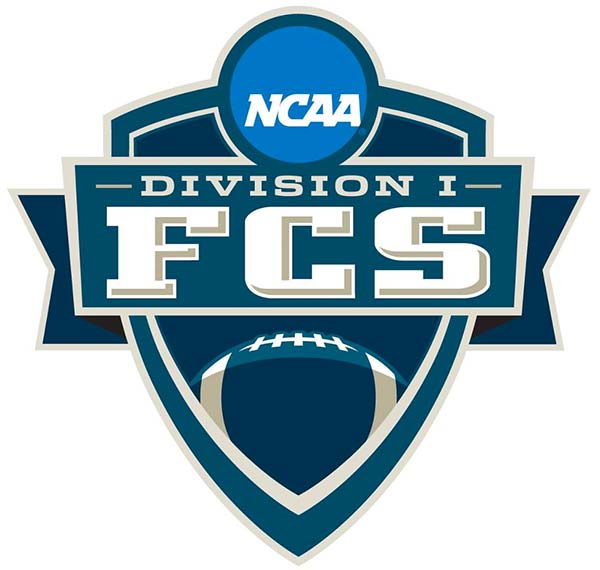The FCS Should Now Try To Play A Modified Season in the Spring. Here’s How You Do It.

With the Big Sky and Pioneer Leagues deciding to cancel and postpone their seasons, the FCS Championship for 2020 was officially cancelled. As of this weekend, more than half of the membership of the FCS had officially said they would not be contesting a championship in the fall of 2020. Most, if not all, may follow them in the weeks ahead.
It is time to start thinking about how a modified football season might work in the spring. It could, if administrators think outside the box.
In normal times, college football programs would routinely play spring practices in order to prepare for the season ahead. The premise I propose is this: What if you could contest a modified, ultra-shortened season during a six week period in spring, in for form of five or six team “pods”?
With the caveat that a lot of progress would have to be made in the next couple of months towards flattening the curve and knowing how to manage COVID, playing a radically shortened season of six “regular-season” games would allow for most teams to only have a season that is marginally longer than what they would do for spring practices. And from those games, it is possible to come up with an FCS Championship.
Best of all, this could be done in a one-off, extremely regional fashion.
Here’s how.

The Four Regions
There are 127 schools with FCS programs – 123 that are playoff-eligible, and 4 that are transitioning to Division I FCS.
If you subtract the teams of the non-participating Ivy League, and the schools of the MEAC and SWAC, who don’t send their champions to the FCS playoffs, it leaves 100 football programs.
(The Ivy League, MEAC and SWAC’s champions do not participate in the FCS playoffs normally. They can still have a spring season, of course, but it will be independent of this pod system. The Ivy League’s champion would be determined as it is every season – through conference records. The MEAC and SWAC can determine their champion through the SWAC Championship and, if held, the Celebration Bowl, just as it is in the fall.)
All FCS programs that participate in the FCS Playoffs reside in four regions: the East, the Midwest, the South, and the West.
If you define “the East” as most of Virginia, Delaware, half of Pennsylvania, and the rest of the Northeastern states, you can make a “pod” of 25 different FCS programs. Some conferences would have to have some members across pods, some transitional teams would compete, and some that are ineligible for the postseason due to APR noncompliance would be, too, but it could be done.
When I went through the exercise of creating “pods”, I came up with two 26 team pods, one 25 team pod, and one 23 team pod.
Whenever possible, I tried to keep conferences together, but it was not always possible. For example, the NEC stretches from Massachusetts to western Pennsylvania – it made more sense to group all the western teams with the Midwest pod, and the Eastern teams with the Eastern pod.
From there, I made different “divisions” of each pod. I tried to keep the divisions as regional as possible, and I also tried to preserve longstanding rivalries as well. Ironically, in FCS regionalization actually helps preserve rivalries that might not have gone on in any other circumstance – it’s a cinch to include Eastern Ilinois in the same “division” as Illinois State, for example, preserving the Mid-America Classic.
Originally I tried to make four different “divisions” for each pod, but I found that sometimes, five teams made more sense. Cal Poly, UC Davis, Sacramento State, Portland State, and San Diego make sense as a division – there wasn’t a logical sixth team to add. A five team “division” can still work, but it requires a bye for one team each week, or have a game filled with a regional Division-II team. (For example, San Diego could play D-II Azusa Pacific, an old-time rival.)

How The Season Could Play Out
If every “division” is five or six teams, a schedule becomes something possible to visualize.
Preseason could start on Monday, March 1st, 2021. An abbreviated preseason for a five game schedule could be two weeks long. The first regular season game weekend would be March 18th-21st, and go through the weekend of April 17th.
Many, but not all, of the games could be done via same-day bus trips. For example, in my proposal Colgate plays in the “Empire Division”. They would play a five game schedule vs. Albany, Stony Brook, Fordham, Wagner, and LIU. All of those are bus trips. Some are a bit long – LIU is 200 miles away from Hamilton, NY – but they are doable, and their games are all under the jurisdiction of the same state Governor.
With four or five “divisions” in a pod, each division would have a “champion” which would compete to determine who is the champion.
For example, let’s take the Midwest. I have them organized into five divisions: the Lincoln Division, the Crossroads Division, the Show-Me Division, the Dakota Division, and the Steel Division. All five of these divisions would have a champion. Let’s say the champions are North Dakota State (Dakota), Eastern Kentucky (Crossroads), Youngstown State (Steel), Central Arkansas (Show-Me), and Illinois State (Lincoln).
Two conference champions would play a play-in game (EKU vs. Youngstown in my example) and then play North Dakota State in a semifinal, while Central Arkansas and Illinois State would play the other. The winners would then play, and the winner would represent the Midwestern pod in the National semifinals.
So picture a North Dakota State official 2020-2021 spring football schedule:
March 18th MINOT ST.
March 27th at Drake
April 3rd SOUTH DAKOTA STATE
April 10th at South Dakota
April 17th NORTH DAKOTA
If they go 5-0, they are the No. 1 seed and get a bye in the first round of the “pod playoffs”.
April 24th BYE
May 1st YOUNGSTOWN STATE (winner of the Youngstown State/Eastern Kentucky 4/5 game)
May 8th MIDWEST POD CHAMPIONSHIP: ILLINOIS STATE (winner of the Illinois State/Central Arkansas Pod Semifinal)
From there, the national semifinals and finals.
May 15th MIDWEST POD WINNER vs. WEST POD WINNER
May 22nd FCS National Championship Game in Frisco
The advantage of such an abbreviated schedule is that there are only two teams that would play the largest number of games (9, or possibly 10), and it’s over by the end of May. If you wanted to stretch it out a little and add a bye week, you could even have the National Championship game Memorial Day weekend.
Another advantage is that it would allow for some rest for the athletes in between seasons. You could start a fall 2021 season preseason camp on time, or you could delay or shorten the preseason period and then start a 2021 season on time.
Such a season and such a pod schedule would not be perfect. By necessity some really good games could be missed – UNI vs. North Dakota State, a hotly-anticipated regular season game during normal times, might not happen, for example. Some traditional conference rivalries, like Lehigh vs. Colgate, would be put on pause, due to the nature of the divisions.
But in a COVID-19 world, no sports are the same, and FCS would have to adjust as well. If the most important thing is to get some competitions to set up a return to normal-looking conferences and divisions in fall of 2021, it should be something that every conference commissioner and every FCS Athletic Director should be looking at.
Most importantly, this “pod system” would preserve many of the local rivalries that many passionate fans care about, while still preserving the uniqueness of the FCS Championship as well. You can’t say the teams in the pods wouldn’t have a chance at the championship, and it could be done with a shortened season that only minimally affects a fall 2021 season – after all, most teams will only play four or five games, the length of a spring practice during normal times.
I think that something like this – a one-off, Pod National Championship of spring of 2021 – could be exactly what FCS football fans need to get through a football-less fall. It feels like the right thing to try.
The 2021 Pods

East Pod (26 teams)
Consists Of: CAA, most of the Patriot League, Eastern teams of the NEC, Marist, Monmouth (NJ)
Yankee Division: Maine, New Hampshire, Holy Cross, Merrimack, Rhode Island, Bryant
Empire Division: Colgate, Stony Brook, Albany, Fordham, LIU
Post Road Division: CCSU, Sacred Heart, Monmouth (NJ), Marist, Wagner
Keystone Division: Villanova, Lafayette, Lehigh, Delaware, Towson
Colonial Division: Georgetown, Richmond, James Madison, William & Mary, Elon

South Pod (23 teams)
Consists Of: SoCon, most of Big South, some PFL, some OVC
Sargent York Division: UT-Chattanooga, ETSU, Austin Peay, UT Martin, Tennessee Tech, Tennessee State
Carolina Division: The Citadel, VMI, Wofford, Furman, Davidson, Western Carolina
Gulf Coast Division: Jacksonville St., Samford, North Alabama, Stetson, Kennesaw State, Mercer
Boone Division: Campbell, Chuck South, Gardner-Webb, Hampton, Presbyterian
NOTE: The South Pod is only 4 divisions, so after their 5 game schedule, they would get a bye week before the divisional champions are seeded 1-4 and they play their semifinal.

West Pod (26 Teams)
Consists Of: Big Sky, most of Southland , San Diego, Dixie State (UT)
El Nino Division: Cal Poly, UC Davis, Sacramento State, San Diego, Portland State
Glacier Division: Eastern Washington, Idaho, Idaho State, Montana, Montana State, Northern Colorado
Monument Valley Division: Dixie State (UT), Northern Arizona, Northern Colorado, Southern Utah, Weber State
Jazz Division: McNeese State, Nicholls, SeLa, N’Western State, SFA, Lamar
Alamo Division: Abilene Christian, Houston Baptist, Incarnate Word, Sam Houston State, Tarelton State

Midwest Pod (25 teams)
Consists Of: Missouri Valley, some PFL, NEC West, many OVC, Bucknell
Lincoln Division: Illinois State, Southern Illinois, Western Illinois, Eastern Illinois, Northern Iowa
Crossroads Division: Indiana State, Valparaiso, Butler, Dayton, Eastern Kentucky
Show-Me Division: Missouri State, SEMO, Central Arkansas, Morehead State, Murray State
Dakota Division: North Dakota, North Dakota State, South Dakota, South Dakota State, Drake
Steel Division: Robert Morris, Bucknell, Duquesne, St. Francis (PA), Youngstown State

Chuck has been writing about Lehigh football since the dawn of the internet, or perhaps it only seems like it. He’s executive editor of the College Sports Journal and has also written a book, The Rivalry: How Two Schools Started the Most Played College Football Series.
Reach him at: this email or click below: